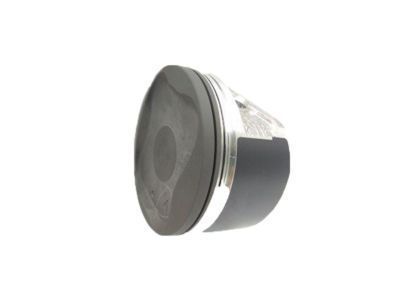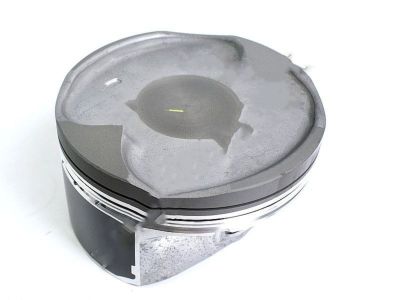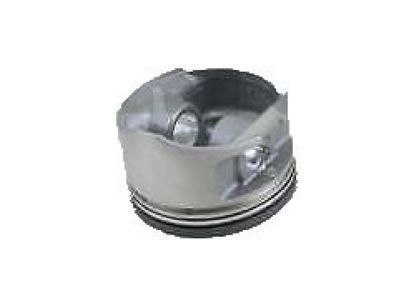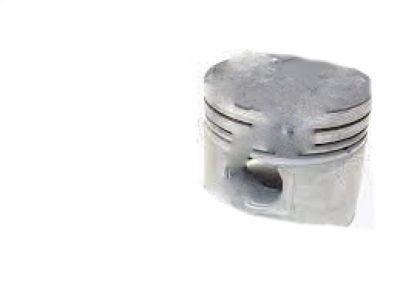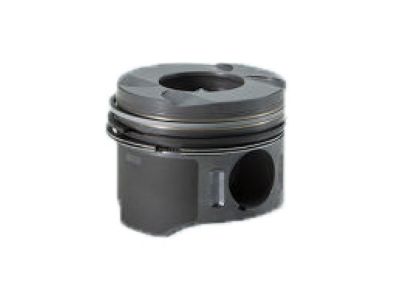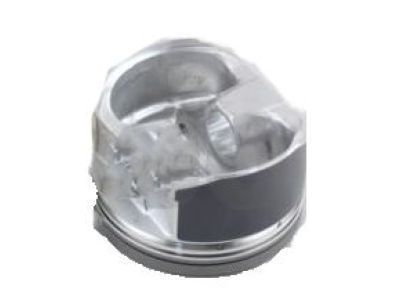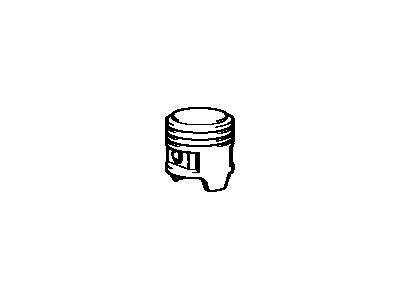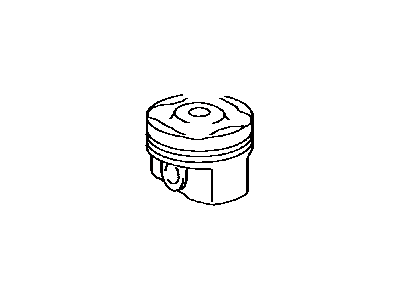×
- Live Chat
- 1-888-905-9199


My Garage
My Account
Cart
Genuine Toyota 4Runner Piston
Engine Pistons- Select Vehicle by Model
- Select Vehicle by VIN
Select Vehicle by Model
orMake
Model
Year
Select Vehicle by VIN
For the most accurate results, select vehicle by your VIN (Vehicle Identification Number).
91 Pistons found
Toyota 4Runner Piston Sub-Assy, W/Pin
Part Number: 13101-31030-A0$89.23 MSRP: $125.78You Save: $36.55 (30%)Ships in 1-2 Business DaysToyota 4Runner Piston Sub-Assembly, W/P
Part Number: 13101-31120-B0$86.52 MSRP: $121.95You Save: $35.43 (30%)Ships in 1-3 Business DaysToyota 4Runner Piston Sub-Assy, W/Pin
Part Number: 13103-62060$136.20 MSRP: $193.63You Save: $57.43 (30%)Ships in 1-3 Business DaysToyota 4Runner Piston Sub-Assy, W/Pin
Part Number: 13101-62060-03$112.12 MSRP: $158.05You Save: $45.93 (30%)Ships in 1-3 Business DaysToyota 4Runner Piston Sub-Assy, W/Pin
Part Number: 13101-75041$127.19 MSRP: $180.83You Save: $53.64 (30%)Ships in 1-3 Business DaysToyota 4Runner Piston Sub-Assy, W/Pin
Part Number: 13101-50061-01$112.62 MSRP: $158.75You Save: $46.13 (30%)Ships in 1-3 Business DaysToyota 4Runner Piston Sub-Assy, W/Pin
Part Number: 13101-31030-B0$89.23 MSRP: $125.78You Save: $36.55 (30%)Ships in 1-3 Business DaysToyota 4Runner Piston Sub-Assembly, W/P
Part Number: 13101-31120-A0$86.52 MSRP: $121.95You Save: $35.43 (30%)Ships in 1-3 Business DaysToyota 4Runner Piston Sub-Assy, W/Pin
Part Number: 13103-35042$88.55 MSRP: $124.82You Save: $36.27 (30%)Ships in 1-3 Business DaysToyota 4Runner Piston Sub-Assy, W/Pin
Part Number: 13101-31030-C0$89.17 MSRP: $125.70You Save: $36.53 (30%)Ships in 1-3 Business DaysToyota 4Runner Piston Sub-Assy, W/Pin
Part Number: 13101-31030$89.23 MSRP: $125.78You Save: $36.55 (30%)Ships in 1-3 Business DaysToyota 4Runner Piston Sub-Assy, W/Pin
Part Number: 13103-75130$109.75 MSRP: $154.71You Save: $44.96 (30%)Ships in 1-3 Business DaysToyota 4Runner Piston Sub-Assy, W/Pin
Part Number: 13101-75130$89.23 MSRP: $125.78You Save: $36.55 (30%)Ships in 1-3 Business DaysToyota 4Runner Piston Sub-Assy, W/Pin
Part Number: 13101-62060-01$112.12 MSRP: $158.05You Save: $45.93 (30%)Ships in 1-3 Business DaysToyota 4Runner Piston Sub-Assy, W/Pin
Part Number: 13101-62060-02$112.12 MSRP: $158.05You Save: $45.93 (30%)Ships in 1-3 Business DaysToyota 4Runner Piston Sub-Assy, W/Pin
Part Number: 13103-75041$150.88 MSRP: $214.50You Save: $63.62 (30%)Ships in 1-3 Business DaysToyota 4Runner Piston Sub-Assy, W/Pin
Part Number: 13105-35030$76.48 MSRP: $107.81You Save: $31.33 (30%)Ships in 1-3 Business DaysToyota 4Runner Piston Sub-Assy, W/Pin
Part Number: 13101-35031$81.81 MSRP: $115.32You Save: $33.51 (30%)Ships in 1-3 Business DaysToyota 4Runner Piston Sub-Assy, W/Pin
Part Number: 13101-35032-02$81.81 MSRP: $115.32You Save: $33.51 (30%)Ships in 1-3 Business DaysToyota 4Runner Piston Sub-Assy, W/Pin
Part Number: 13101-35032-01$81.89 MSRP: $115.44You Save: $33.55 (30%)Ships in 1-3 Business Days
| Page 1 of 5 |Next >
1-20 of 91 Results
Toyota 4Runner Piston
If you are in demand for superior quality and affordable OEM Toyota 4Runner Piston, then shop with us! We own a wide range of the reduced-priced genuine Toyota 4Runner Piston. You can purchase in confidence as all parts come with a manufacturer's warranty. Any issues with our products? No need to worry as we have a hassle-free return policy to guide you every step of the way.
Toyota 4Runner Piston Parts Questions & Experts Answers
- Q: How to properly remove piston/connecting rod assemblies on 1996 through 2002 Toyota 4Runner?A: Prior to removing the piston and connecting rod assemblies, the Cylinder Head(s), oil pan, and oil pump pick-up at the upper limit of ring travel (approximately 1/4-inch down from the top of each cylinder) must be removed. If carbon deposits or cylinder wear have created ridges, these must be completely eliminated using a special tool, specifically a ridge reamer, before the pistons are removed to avoid piston damage. After the ridges are removed, turn the engine upside-down with the crankshaft facing up. Before disconnecting the connecting rods, check the endplay with feeler gauges by sliding them between the first connecting rod and the crankshaft throw until the play is eliminated; the endplay corresponds to the thickness of the feeler gauge(s). If the endplay exceeds the specified service limit, new connecting rods will be necessary. If new rods or a new crankshaft are installed, the endplay may fall below the service limit, requiring machining of the rods to restore it. Check the connecting rods and caps for identification marks; if they are not clearly marked, use a small center punch to create indentations on each rod and cap to indicate their associated cylinder. Loosen each connecting rod cap nut by 1/2-turn until they can be removed by hand, then take off the number one connecting rod cap and bearing insert without dropping the bearing insert. To protect the crankshaft journal and cylinder wall during piston removal, slip a short length of plastic or rubber hose over each connecting rod cap bolt. Remove the bearing insert and push the connecting rod/piston assembly out through the top of the engine using a wooden hammer handle on the upper bearing surface in the connecting rod; if resistance is encountered, ensure all ridge material has been removed from the cylinder. Repeat this process for the remaining cylinders, turning the crankshaft as needed to align the rod with the cylinder bore. After removal, reassemble the connecting rod caps and bearing inserts in their respective rods and install the cap nuts finger tight to prevent accidental damage to the bearing surfaces. Avoid separating the pistons from the connecting rods.
Related Toyota 4Runner Parts
Browse by Year
2024 Piston 2023 Piston 2022 Piston 2021 Piston 2020 Piston 2019 Piston 2018 Piston 2017 Piston 2016 Piston 2015 Piston 2014 Piston 2013 Piston 2012 Piston 2011 Piston 2010 Piston 2009 Piston 2008 Piston 2007 Piston 2006 Piston 2005 Piston 2004 Piston 2003 Piston 2002 Piston 2001 Piston 2000 Piston 1999 Piston 1998 Piston 1997 Piston 1996 Piston 1995 Piston 1994 Piston 1993 Piston 1992 Piston 1991 Piston 1990 Piston 1989 Piston 1988 Piston 1987 Piston 1986 Piston 1985 Piston 1984 Piston
